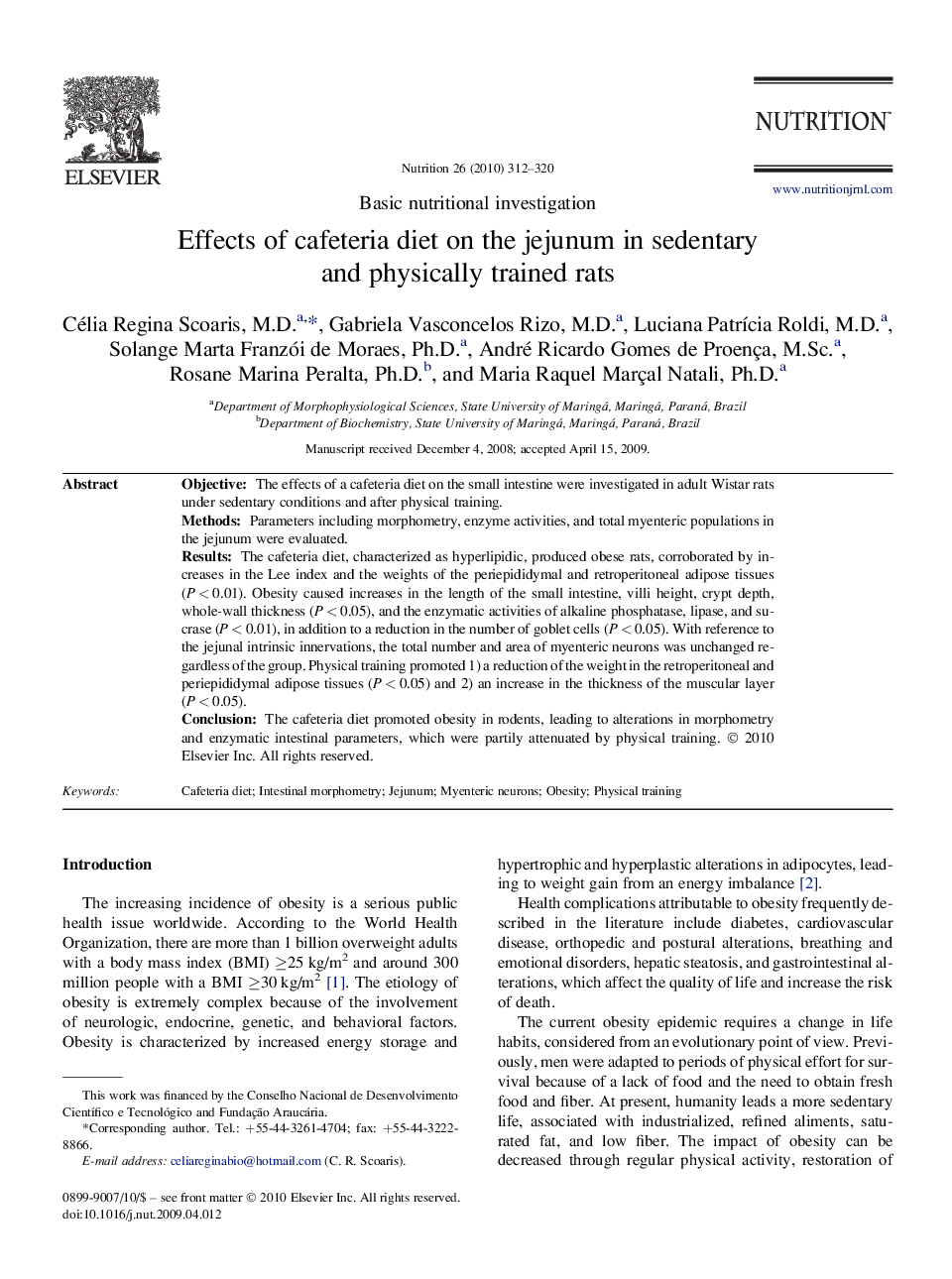| Article ID | Journal | Published Year | Pages | File Type |
|---|---|---|---|---|
| 3277048 | Nutrition | 2010 | 9 Pages |
ObjectiveThe effects of a cafeteria diet on the small intestine were investigated in adult Wistar rats under sedentary conditions and after physical training.MethodsParameters including morphometry, enzyme activities, and total myenteric populations in the jejunum were evaluated.ResultsThe cafeteria diet, characterized as hyperlipidic, produced obese rats, corroborated by increases in the Lee index and the weights of the periepididymal and retroperitoneal adipose tissues (P < 0.01). Obesity caused increases in the length of the small intestine, villi height, crypt depth, whole-wall thickness (P < 0.05), and the enzymatic activities of alkaline phosphatase, lipase, and sucrase (P < 0.01), in addition to a reduction in the number of goblet cells (P < 0.05). With reference to the jejunal intrinsic innervations, the total number and area of myenteric neurons was unchanged regardless of the group. Physical training promoted 1) a reduction of the weight in the retroperitoneal and periepididymal adipose tissues (P < 0.05) and 2) an increase in the thickness of the muscular layer (P < 0.05).ConclusionThe cafeteria diet promoted obesity in rodents, leading to alterations in morphometry and enzymatic intestinal parameters, which were partily attenuated by physical training.
